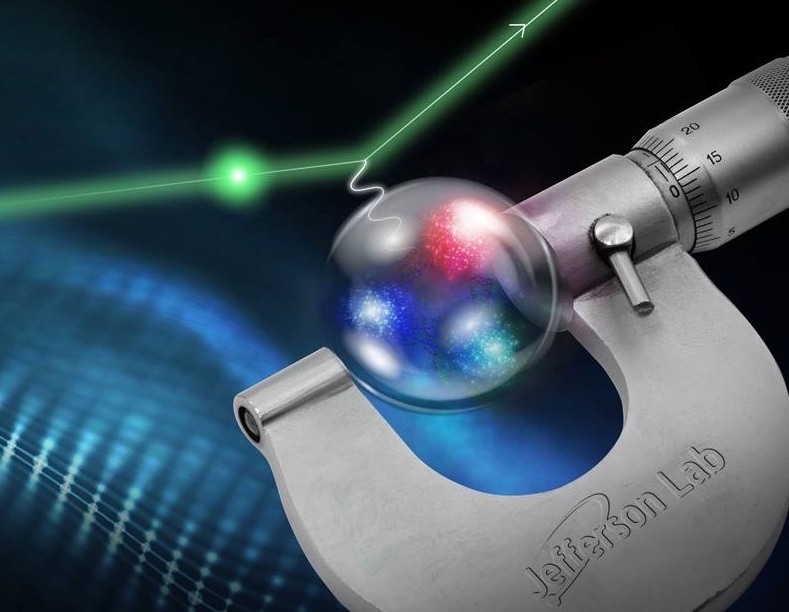
Enlarge / One way to measure the charge radius of a proton is to bounce something off it (proton-sized clamp is only available via metaphor). (credit: Jefferson Lab)
How big is a proton? This doesn't sound like a very complicated question, but it's one that turned out to have the potential to wreck a lot of modern physics. That's because different methods of measuring the proton's charge radius produced results that disagreed—and not just by a little bit: the answers were four standard deviations apart. But now, a new and potentially improved measurement brings them much closer to agreement, although not quite close enough that we can consider the issue resolved.
We seem to have a problem
There are a couple of ways to measure a proton's charge radius. One is to bounce other charged particles off the proton and measure its size based on their deflections. Another is to explore how the proton's charge influences the behavior of an electron orbiting it in a hydrogen atom, which consists of only a single proton and electron. The exact energy difference between different orbitals is the product of the proton's charge radius. And, if an electron transitions from one orbital to another, it'll emit (or absorb) a photon with an energy that corresponds to that difference. Measure the photon, and you can work back to the energy difference and thus the proton's charge radius.
(The actual wavelength depends on both the charge radius and a physical constant, so you actually need to measure the wavelengths of two transitions in order to produce values for both the charge radius and the physical constant. But for the purposes of this article, we'll just focus on one measurement.)
No comments:
Post a Comment